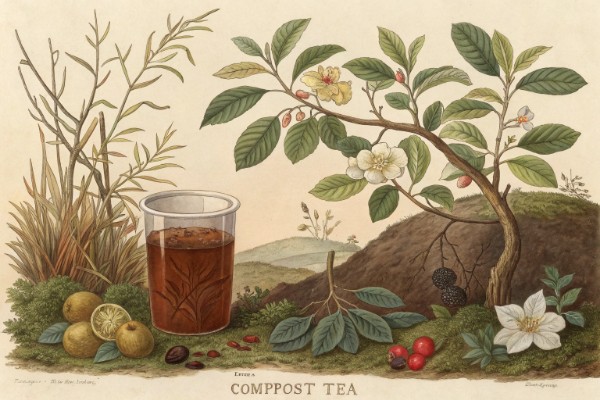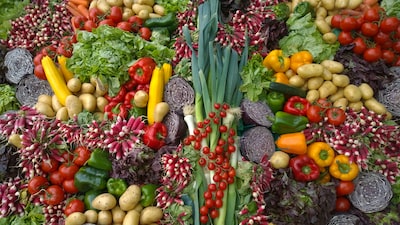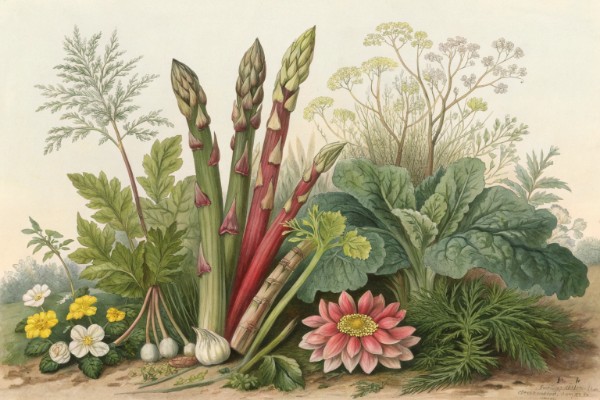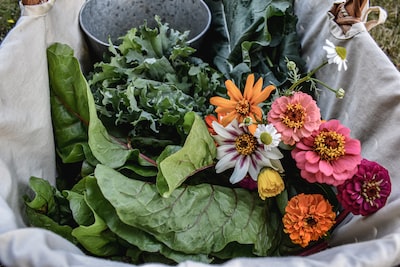Gardening Classes to Cultivate Your Growing Skills

gardening classes
Taking gardening classes gives you practical skills, expert guidance, and fresh inspiration to grow dazzling plants at home. Local garden centers, botanical gardens, and community colleges frequently offer hands-on gardening classes covering veggies, flowers, soil health, and landscape design. Sign up for gardening classes, build your horticultural confidence, and transform your backyard plot from average to enviably lush.
Cheatsheet: Fast-Track Your Gardening Know-How
🌱 Find the Right Class
- Online: MasterClass, Coursera, local extension videos
- In-person: Botanic gardens, community centers, farms
- Topics: Vegetable growing, permaculture, pruning, propagation, soil science
- 👩🌾 Community gardens: Hands-on, expert-led, social
🔎 Class Formats
- Workshops: 1–2 hours, single topic
- Series: 4–12 weeks, build skills weekly
- Self-paced: Go anytime, fits busy schedules
📈 Why Join?
- Grow 30% more food with practical training
- Reduce grocery costs and boost self-sufficiency
- Learn proven pest, disease, and watering techniques
- Improve nutrition: homegrown veggies have up to 50% more vitamins
🛠️ Tools and Products You'll Need
- Trowel, pruners, gloves
- Notebook or phone for notes/photos
- Watering can or hose
- Soil test kit
🚀 Steps to Start
- Select a class matching your interests and level
- Purchase or gather necessary supplies
- Attend every session; ask questions
- Apply lessons in your own garden—track progress weekly
- Share successes and seek feedback from classmates or instructors
🥕 Pro Tips
- Document with photos for before/after progress
- Pair up with a classmate for accountability
- Share extra produce with neighbors—spread the harvest!
I stopped guessing after a winter pruning class made my fruit trees triple their yield the next year. Good gardening classes shorten the distance between effort and results.
The first time I learned cation exchange capacity in a lab, fertilizer stopped feeling like superstition and started feeling like math. CEC is your soil’s ability to hold nutrients, and understanding it saves money and plants.
I bring recent soil tests to class and ask the instructor to mark up the report with me. Those annotated pages beat any textbook.
A real compost class teaches carbon to nitrogen ratios, particle size, moisture by the squeeze test, and how to read a compost thermometer. I aim for 140 to 158 F (60 to 70 C) for hot piles, with a pile at least 3 by 3 by 3 ft (0.9 by 0.9 by 0.9 m).
EPA guidance: maintaining hot compost near 131 to 160 F (55 to 71 C) helps reduce many plant pathogens and weed seeds. Source: U.S. Environmental Protection Agency.
I learned to log temperatures like a baker watches dough. The pile tells you what it needs if you actually look.
Good irrigation workshops cover ET or evapotranspiration, drip emitter sizing, pressure regulation, and backflow prevention. The first time I designed a zone from scratch, my tomatoes stopped cracking and my water bill dropped.
One inch of water equals about 0.62 gallons per square foot. That math turns vague advice into measurable scheduling.
I now check soil with a screwdriver and moisture meter before touching the timer. Tools beat hunches.
A pruning instructor once tapped my wrist and said, cut to the collar, not the trunk. That small correction ended a decade of flush cuts.
Look for classes that teach CODIT biology, correct angles, species timing, and scaffold structure. Your trees will carry fruit without tearing themselves apart.
Integrated pest management is a decision framework that uses identification, thresholds, and least-toxic controls first. The best classes teach degree day models, monitoring, and how to read damage patterns like bite marks on a crime scene.
I carry a loupe and sticky cards now. The pests show up in your notes before they show up in your harvest basket.
Seed-starting classes that share soil temperature charts pay off fast. Lettuce germinates fine at 60 F to 68 F (15 C to 20 C), but peppers sleep below 75 F (24 C).
Look for sessions that cover succession sowing, low tunnels, and row cover weights like 0.5 to 1.0 oz per sq yd (17 to 34 g per sq m). Those details buy weeks on both ends of the season.
Courses that reference WUCOLS plant water-use ratings shaped my dry garden into a pollinator magnet. The right plants in the right place need less of everything.
Beth Chatto: right plant, right place. That line will save you money and heartbreak.
Ask for field walks. Seeing mature root systems in summer heat rewires your plant list fast.
My favorite studio taught scaled drawings at 1:20 and slope at 2 percent fall for drainage. Paths got wider, beds got tighter, and wheelbarrows stopped biting my ankles.
Good classes also cover compaction, base layers, and permeable materials. Toss in ADA-friendly path widths of 36 inches (91 cm) and your garden moves like a well-run kitchen.
The first time I hit 0.3 percent IBA on semi-hardwood cuttings and actually tracked humidity, I rooted rosemary like a nursery. Clean blades, clean benches, clean hands.
Ask for modules on seed viability tests and air layering. You will multiply favorites without rolling the dice.
I have found the best instruction through Cooperative Extension offices, Master Gardener programs, botanic gardens, community colleges, and respected nurseries. In the UK, RHS courses deliver tight curricula with assessments that keep you honest.
Online providers from universities can be excellent for theory. I pair those with field labs to make the learning stick.
- Syllabus with learning outcomes and hands-on time.
- Instructor bio with recent field work, not only slides.
- Regional relevance for my climate zone and soil type.
- Seasonal timing that matches the task calendar.
- Student to instructor ratio under 20 to 1 for field days.
- Materials list and what the fee covers.
- Post-class support like office hours or a forum.
- Assessments or projects that prove skills, not memory.
- Refund policy and weather backup dates.
- Safety plan and required PPE listed upfront.
Public Extension workshops often run 0 to 50 USD or 0 to 40 GBP per session, and they punch far above their price. Botanic garden half days often sit around 50 to 200 USD or 40 to 160 GBP, with materials and facility access included.
Multi-week certificates can range 600 to 2,000 USD or 500 to 1,700 GBP depending on depth, exams, and instructor time. Prices swing by city and venue.
Master Gardener training ties education to community hours and gives you a network of problem solvers. RHS Level 2 builds respected fundamentals that employers recognize.
Arborist prep courses sharpen tree care choices even for home orchards. Rainwater harvesting and greywater classes pay you back in summer.
I like online for science, math, and recorded lectures I can replay. I need in-person for pruning cuts, grafting, irrigation assembly, and soil texture by feel.
Hybrid setups win. Watch the lecture, then measure, cut, and fail safely with an instructor watching.
A brewery compost workshop taught me to blend spent grain with dry leaves at about 1 part grain to 3 parts leaves by volume. The pile lit up like a kiln.
A chef’s knife class improved my pruning because grip, stance, and confidence carry over. A fungi cultivation class changed how I use wood chips as living mulch.
- New food grower: soil testing 101, drip irrigation install, pest ID for vegetables.
- Small orchard: winter and summer pruning, thinning, grafting, codling moth monitoring.
- Pollinator haven: native plant palette by region, bloom succession planning, hedgerow design.
- Water saver: ET-based scheduling, rainwater catchment, greywater basics.
- Market grower: postharvest handling, crop planning with spreadsheets, food safety.
- Shady yard: woodland plants, moisture management, structural pruning for light.
- Balcony grower: container media science, sub-irrigated planters, dwarf cultivars.
- Picking classes out of season, then forgetting the skills by the time work starts.
- Choosing a climate mismatch taught by an instructor two zones away.
- Buying gear before the class tells you what actually fits your site.
- Skipping the prerequisite, then getting lost on day one.
- Ignoring fine print about cancellations and weather.
- Bring plant samples in sealed bags and ask for on-the-spot diagnostics.
- Take photos with labels and measurements for later review.
- Ask for the raw data sheets or templates the instructor uses.
- Form a study group the same day and schedule a follow-up practice session.
- Volunteer in the instructor’s demo garden to cement the skill.
For tool-heavy classes, I want eye protection, gloves, and a signed safety briefing before we touch a blade. I check that instructors carry insurance and that we cover ladder safety, hearing protection, and tetanus status for outdoor work.
For pesticide topics, I expect clear rules, legal labels, and a focus on nonchemical controls first. Anything less belongs in the recycle bin.
- IPM: a prevention-first decision system using monitoring and thresholds before control.
- CEC: soil’s capacity to hold positively charged nutrients like potassium and calcium.
- ET: evapotranspiration, the water lost by soil and plants that drives irrigation schedules.
- VPD: vapor pressure deficit, a measure of air thirst that influences plant stress.
- Brix: dissolved sugars percentage in sap or juice, handy for fruit ripeness and plant vigor.
- CODIT: compartmentalization of decay in trees, the biology behind correct cuts.
- USDA Cooperative Extension: region-specific science and field-tested methods.
- EPA: composting, water use, and environmental health guidance.
- Royal Horticultural Society: plant selection, pruning calendars, and qualification standards.
- State or county water agencies: irrigation scheduling by ET and local regulations.
- Botanic gardens with living collections: practical plant trials you can see and touch.

Want smarter plant choices? 🪴
Frequently Asked Questions
What experience level do I need to participate?
Sessions typically accommodate all skill levels. Beginners learn basic gardening techniques, while experienced gardeners refine their skills through advanced methods and specialized topics.
What should I bring to each session?
Participants generally bring comfortable clothing, gardening gloves, sturdy footwear, and note-taking materials. Some sessions may require personal hand tools or containers; the instructor provides guidance prior to the event.
Are materials and supplies included?
Most instructors supply essential materials such as soil, seeds, and plants. Occasionally, specialty items might need to be purchased separately or brought from home; confirm this with your instructor beforehand.
Will sessions cover organic gardening techniques?
Yes, many sessions integrate organic gardening principles, including composting methods, pesticide-free pest management, and sustainable planting practices, fostering healthier gardens and ecosystems.
Do instructors demonstrate pruning and plant maintenance techniques?
Instructors regularly provide live demonstrations on techniques like pruning, trimming, and general plant maintenance. These sessions clarify proper methods and timing to promote vigorous plant growth.
Are sessions suitable for apartment residents or small-space gardeners?
Absolutely. Many instructors offer specialized sessions on container gardening, vertical gardening, and space-saving techniques ideal for apartment balconies, patios, and small urban gardens.
Do classes address local climate and growing conditions?
Yes. Instructors consider regional climates, providing relevant planting calendars, zone-specific plant recommendations, and guidance on managing local weather conditions, from frost protection to drought-resistant strategies.
Can I learn about edible gardening and vegetable cultivation?
Sessions commonly include topics like vegetable gardening, herb cultivation, and edible landscapes. Learn strategies for successful harvests including seed selection, planting schedules, watering methods, and harvesting tips.
Gardening classes turn guesswork into skill, connecting you with techniques that work and a community that digs just as deep as you do. There’s no shortcut to the satisfaction of pulling your own crunchy carrots or watching tomatoes ripen in the sun, but a bit of guidance speeds up the learning curve. Whether you’re wrestling with pest control, curious about why your plants keep dying, or just figuring out how big your garden should be, these classes offer answers and real-life practice.
Invest in gardening classes and you’ll harvest more than just food—expect confidence, knowledge, and connections that last. Pick up a new trick, meet fellow growers, and let your hands learn what books can’t always teach. The best gardens don’t just grow plants; they grow gardeners.
Extra Yield: Health Benefits of Gardening Classes
Boost Your Mental Wellness
- Stress Reduction: Actively gardening decreases cortisol by up to 30%.
- Cognitive Gains: Regular gardening enhances memory retention and concentration.
- Mood Improvement: Exposure to soil microbes increases serotonin levels, naturally elevating mood.
Physical Fitness from Garden Work
- Calorie Burn: One hour weeding or digging burns about 300 calories.
- Improved Heart Health: Regular gardening lowers cardiovascular disease risk by approximately 27%.
- Strength and Flexibility: Repeated bending and lifting actions tone muscles and increase mobility.
Nutrition and Food Security
- Freshness Factor: Homegrown produce offers 40% more vitamins than store-bought options.
- Nutritional Variety: Gardening encourages consumption of diverse vegetables, herbs, and fruits.
- Enhanced Food Security: Growing your own crops boosts household resilience during supply-chain disruptions.
Sleep and Immunity Enhancements
- Better Sleep: Regular gardening activities promote deeper, uninterrupted sleep cycles.
- Immune Support: Daily outdoor gardening elevates Vitamin D levels, enhancing immune defenses.
Find out which plants will thrive in your garden!
Answer a few fun questions and get custom plant recommendations perfect for your space. Let’s grow something amazing together!

start your season





